Here are the best tips for storing your potatoes to make them last for a long time.
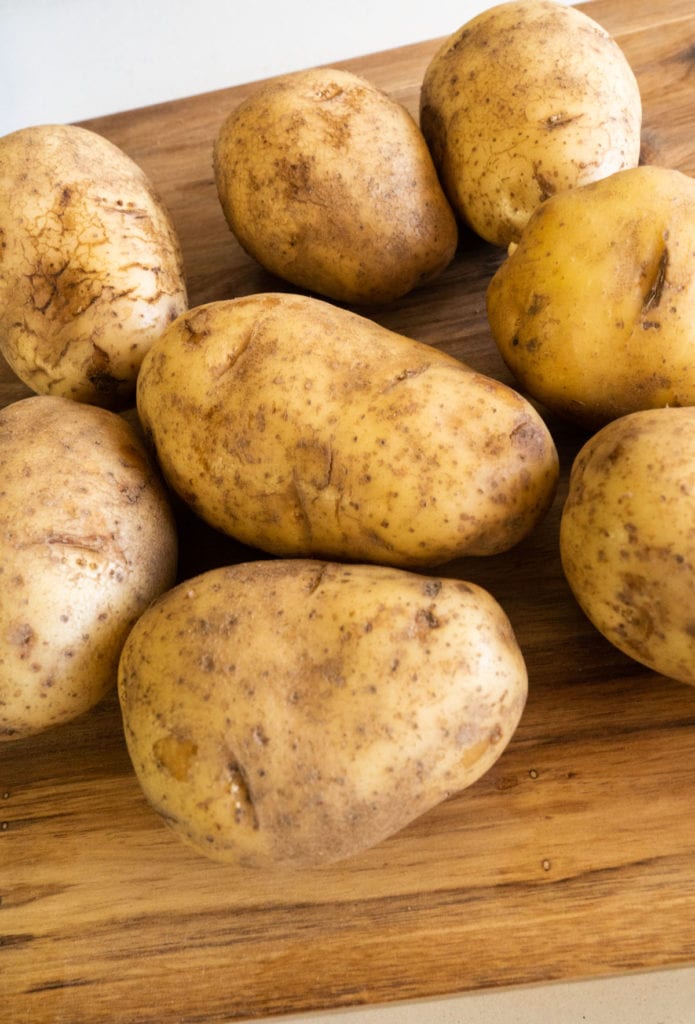
Potatoes are a versatile and common addition to any meal. They come in a variety of colors, sizes, and flavors as well. And when stored properly, they can be stored for months at a time, making them great for buying in bulk to use throughout a season.
It is important, however, to know how to properly store potatoes, and get around all the conflicting information out there. Here are the best tips for storing your potatoes.
Should I store potatoes in the dark?
Ideally, potatoes should be stored in a dark location. Most definitely out of direct light of any kind. Too much exposure to sunlight can lead to excess chlorophyll, turning the potato green, which is harmless, but certainly not desired. It can also lead to the potato producing large amounts of the toxic chemical solanine. This chemical creates a bitter taste and can cause a burning sensation in the mouth and throat in some cases. If consumed in high quantities it can cause nausea, vomiting, and diarrhea, and in rare cases death.
However, most countries limit the acceptable amount of solanine in commercial potatoes, so if you purchase them and use them within a reasonable amount of time you are fine. If your potatoes have turned green in storage it is best to peel the skin and any green portion of the potato away before using it. Solanine is located exclusively in the peel.
Should potatoes be stored in a cool place?
Potatoes can be stored at room temperature but must be used relatively quickly. Ideally, they should be stored in a cooler place. A study was done comparing the shelf life of potatoes at room temperature versus cooler temperatures. Storing them at cooler temps more than quadrupled their shelf life. So, how cool do they need to be? Most places recommend around 45-50 degrees Fahrenheit, but closer to 38 degrees Fahrenheit may be the sweet spot, especially in more humid climates. The average potato has a shelf-life of around 3-4 months in ideal conditions.
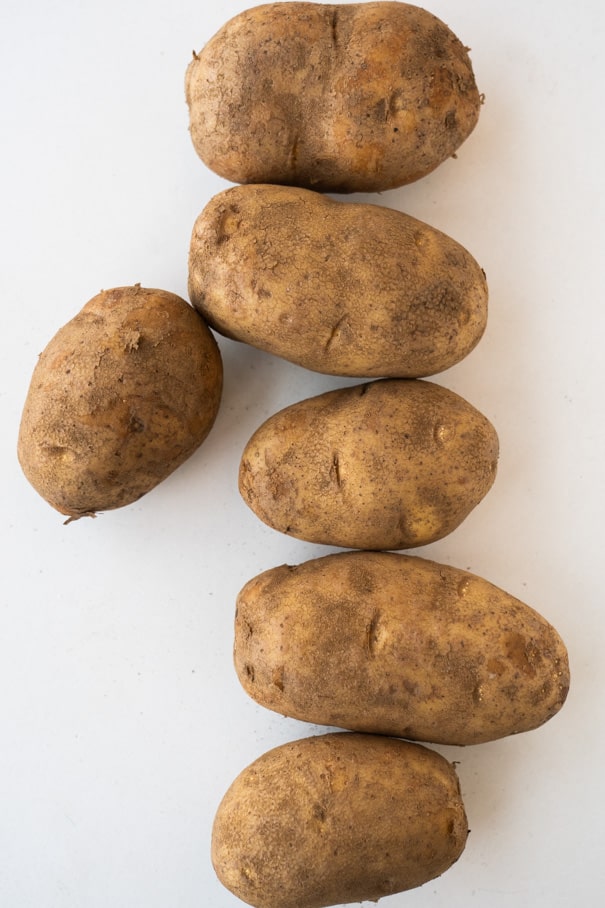
Keep those Vitamins
Another advantage of storing potatoes in lower temperatures is that it helps them maintain their nutritional values; especially with Vitamin C. A cooler temperature can help potatoes retain up to 90% of the Vitamin C for 4 months. Potatoes stored at room temperature can lose almost 20% of their Vitamin C content after just one month.
Do Not Refrigerate Potatoes
You might think that because cooler temps are better, it would be best to just chuck them in the refrigerator, right? Nope! If the temperature is too cold the potatoes will start converting starch to reducing sugars in a process called “cold-induced sweating”. When potatoes with a lot of these reducing sugars are cooked at high temperatures, such as frying them, it can produce acrylamides, which are carcinogens. When raw potatoes are frozen, the water inside them expands and breaks down the cell structures, making them unusable once defrosted. Once potatoes are cooked in any way however, they can be frozen as the cooking process deactivates the browning enzymes and the water content has been largely reduced.
Dry and Airy
Even commercial potatoes arrive quite dirty when bought at the store. And this is for good reason. You want your potatoes to stay away from moisture and humidity. Potatoes stored in humid environments or those that are washed then stored away will quickly rot and spoil. If you washed your potatoes as soon as you dug them up or brought them home, be sure you dry them completely on the counter with plenty of air circulation before storing them away.
This could mean extra exposure to light, so plan carefully. Even in storage, keep them in an open container like a cardboard box with holes, wire basket, mesh bag, or paper bag. Don’t crowd them, either. Air needs to be able to move freely around each potato to keep them happy, healthy, and from sprouting or spoiling too quickly. No matter how you store potatoes, ensure they have good ventilation.
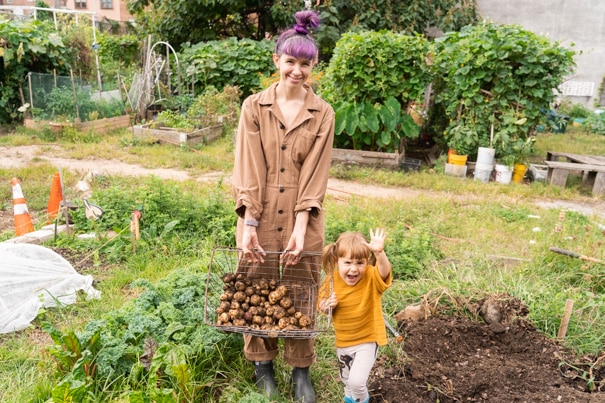
New Versus Mature
“New” or “fingerling” potatoes are actually just potatoes picked before they are fully ripe. They are usually softer with thinner skins. This may be ideal for certain dishes, but it also means they cannot be stored for as long. You’ll want to use these immature potatoes within 2-3 weeks versus “mature” potatoes. Fully ripe and “mature” potatoes are best used in around 4 weeks, though they can remain good for 3-4 months in perfect storage conditions.
Potatoes are Loners
There’s a lot of talk about storing onions and potatoes together since they both like dark dry places. However, they should NOT be stored together. Onions produce a lot of ethylene gas and this will actually cause your potatoes to sprout early, despite information to the contrary. This is my favorite way to store onions. Example after example shows that potatoes will sprout more quickly when stored with onions. And once sprouts start to grow, they take the nutrients out of the potato with them.
Sprouted potatoes are not necessarily harmful if they aren’t shriveled and soft. But you’re going to get very little nutritional value out of the meat of the potato. Also be sure to check your stored potatoes regularly and remove any that are soft, shriveled, or sprouted as these can accelerate the over-ripening of the others they are stored with.
Never store potatoes with other produce like bananas or tomatoes either. (Btw, here’s how I store bananas) These also produce significant amounts of ethylene gas that ripen all of them much faster. Flavor transfer can also occur when potatoes are stored in contact with other produce. If you’ve ever stored potatoes with onions for an extended period, you might have noticed a slightly oniony flavor when you eat your potatoes. So, it’s best to just store potatoes off by themselves to keep them happy, fresh, and retain their flavors.
What To Do When They’re Ready to Fry
Once you are ready to use and cook the potatoes, wash them with a vinegar or salt solution to remove the most of the pesticide chemicals versus washing with water alone. I love using this brush for our garden potatoes to remove the dirt. Even organic potatoes can be grown using certain pesticides, so it’s best to wash all potatoes thoroughly.
Picking Perfect Potatoes
To give your potatoes the longest shelf life, it’s important you start with potatoes that are healthy and just perfectly ripe. Make sure the potatoes are firm to the touch and have no soft spots or bruises. Yellow, red, and purple potatoes should have a bright clear color. Brown-skinned potatoes should look healthy.
Also, check the skin. The smoother the skin, the longer it will last. Along with no bruises or soft spots, make sure they are not sprouting. This is the first step to spoiling and they won’t last much longer at home, even stored correctly. Red and purple-skinned potatoes also boast higher levels of antioxidants and different types of nutrients, so add some of those in! Try to keep a rainbow of color on your plate.
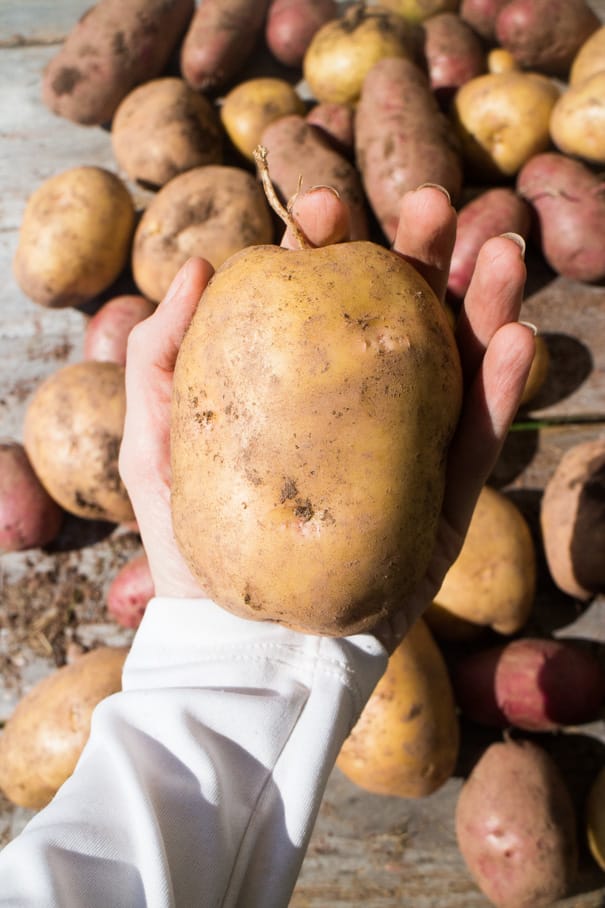
Special Considerations When You Grow Your Own
When you grow your own potatoes and intend to store them for an extended amount of time, it is highly recommended that you “cure” them first. “Cure” at moderately high temperature (around 65 degrees Fahrenheit) and 85-95% for around two weeks.
This allows the skins to grow thicker and heal any minor injuries they sustain. You can place them in a dark closet or stand-up shower with a space heater and a bowl of water (keep if full), or in an empty oven with the door slightly ajar lit with a 40-watt bulb and bowl of water. This ensures they are good for long term storage and minimizes the chances of decay while in storage.
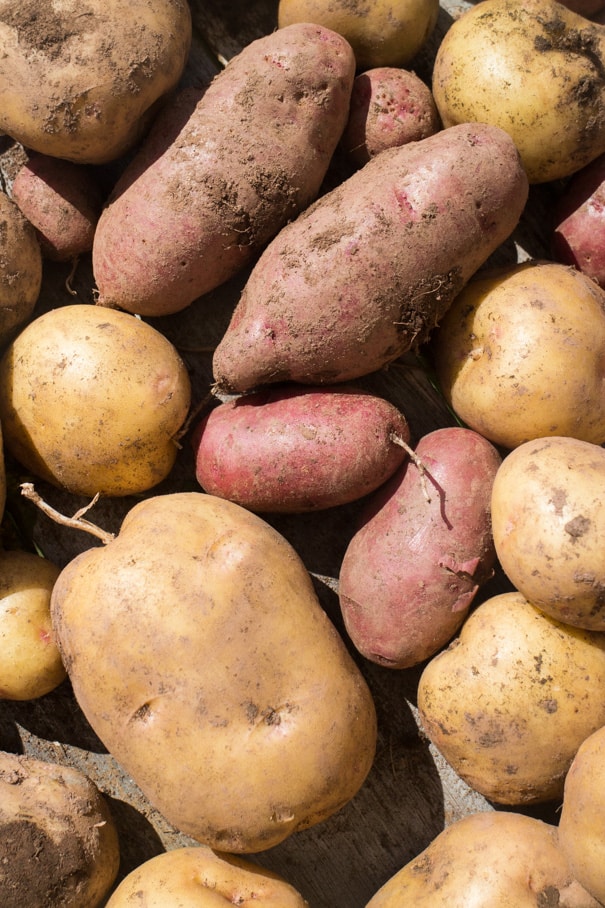
Storing Potatoes Once Cut and Exposed
Once any area of the potato below the skin has been exposed to air it will start to oxidize and turn brown. If you need to store exposed potatoes for 24 hours or less, simply place the pieces in a bowl of water with 1-2″ of water covering them and store them in the fridge.
This will keep them fresh for up to 24 hours. After 24 hours they will absorb too much water and become soggy and tasteless. If you need to store them longer you can vacuum pack them. Place them in a vacuum bag and make sure all the air is removed. These will last up to one week in the fridge. If they are not used before then they will tarn to turn bad due to the water content they naturally have.
Storing Cooked Potatoes
Cooked potatoes can be stored in a variety of ways. They will last for several days stored in the refrigerator. It is important to note, however, that potato’s starches will change shape once cooked then cooled. This is not necessarily a bad thing as this increases the formation of resistant starch. Humans cannot digest and absorb this type of starch and this subsequentially lowers the glycemic index of a potato by around 25%.
So, if you have blood sugar issues, this is actually the ideal way to eat a potato. They may be more watery or gummy in texture, however. Another benefit is that resistant starch promotes gut health. Gut bacteria ferment it and produce short-chain fatty acids, which improve the health of the lining of your stomach and intestines. Any cooked and refrigerated potatoes should be eaten within 3 to 4 days or they will spoil.
Freezing Cooked Potatoes
If you don’t’ plan on eating the potatoes you cooked within a few days, it is best to freeze them. They will not brown since cooking them destroys the enzyme that oxidizes. Like anything else, it’s best to store them with as little air as possible when freezing them.
Once frozen, cooked potatoes can remain frozen up to one year. They will have no noticeable change in their quality or nutritional value. It is best to defrost them overnight in the fridge versus microwave defrosting them. The microwave can change the structure and result in changing the texture.
Here’s my favorite way to freeze mashed potatoes too.
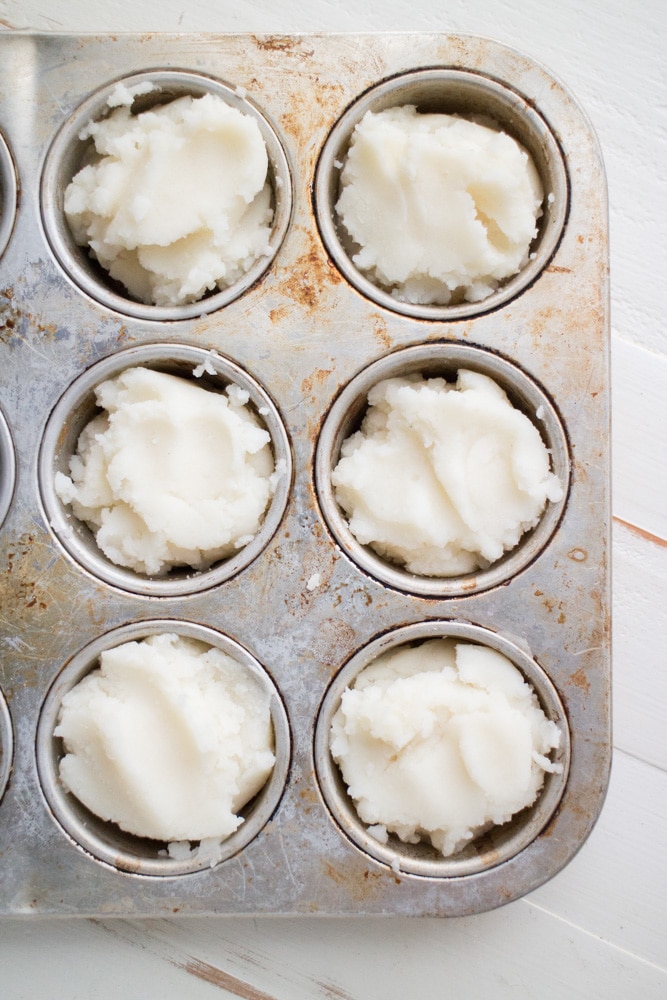
So Some Potatoes Went Bad, Now What?
Potatoes that have sprouted can be used to grow your own potatoes. They are super easy to grow, just about anywhere (They started growing when you weren’t doing anything but storing them, right?) Cut up the potato so there is an eye or single sprout on each piece. Leave the pieces out in the dark to dry and harden, or “chit” for 1-4 days then just plant them in the dirt. This makes them more resistant to soil rot and other diseases.
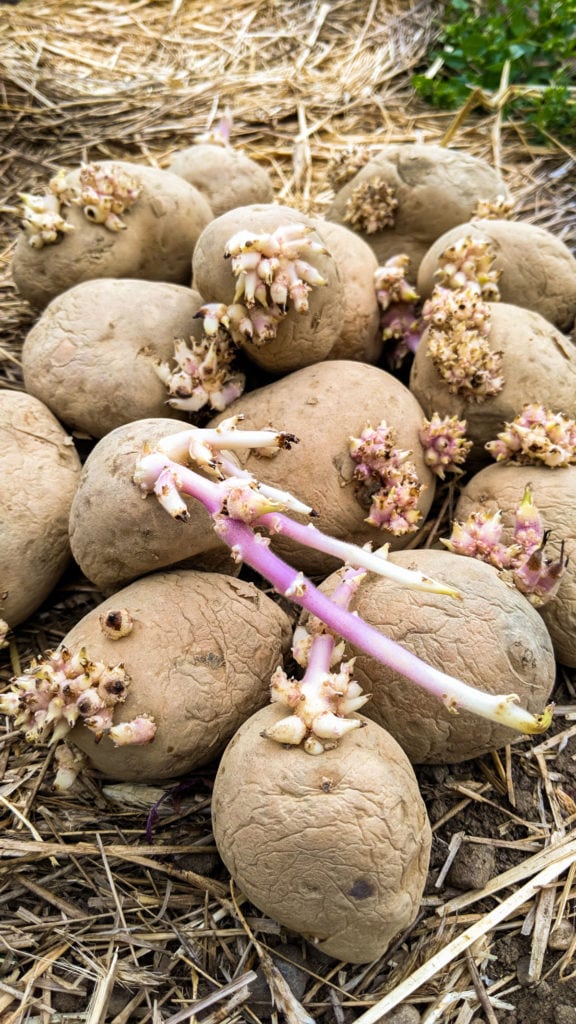
Plant them with the eye, or sprout side, up. Roots should grow out the opposite side into the dirt. However, if you mix it up, they are usually hardy enough to grow just fine anyway. You want to plant them once the soil is consistently past the frost in very early spring. It takes anywhere from 75- 135 days to grow fully, depending on the variety and your climate. Be sure you research what kind of potato you have and what is best for growing it in your climate zone.
I hope this guide helps you on how to store potatoes!
Looking for more vegetable storing tips? Here’s how to store garlic and how to store carrots for months.
need potato recipes?
Here are some of my favorite potato recipes: Easy Mashed Potatoes, Crockpot Baked Potatoes, Healthy Potato Soup, Irish Colcannon, Mashed Potato Patties, Sheet Pan Sausage and Potatoes, , Slow Cooker Sausage and Cabbage, Crockpot Meatball and Potatoes, Dairy Free Mashed Potatoes.
Pin for later:
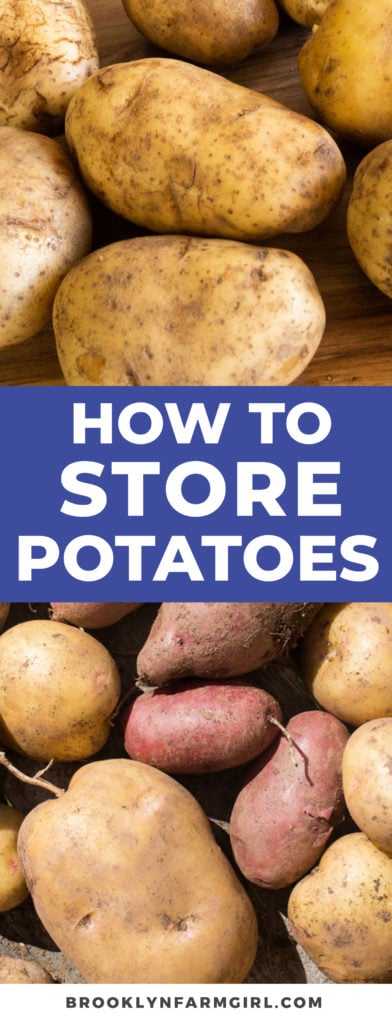
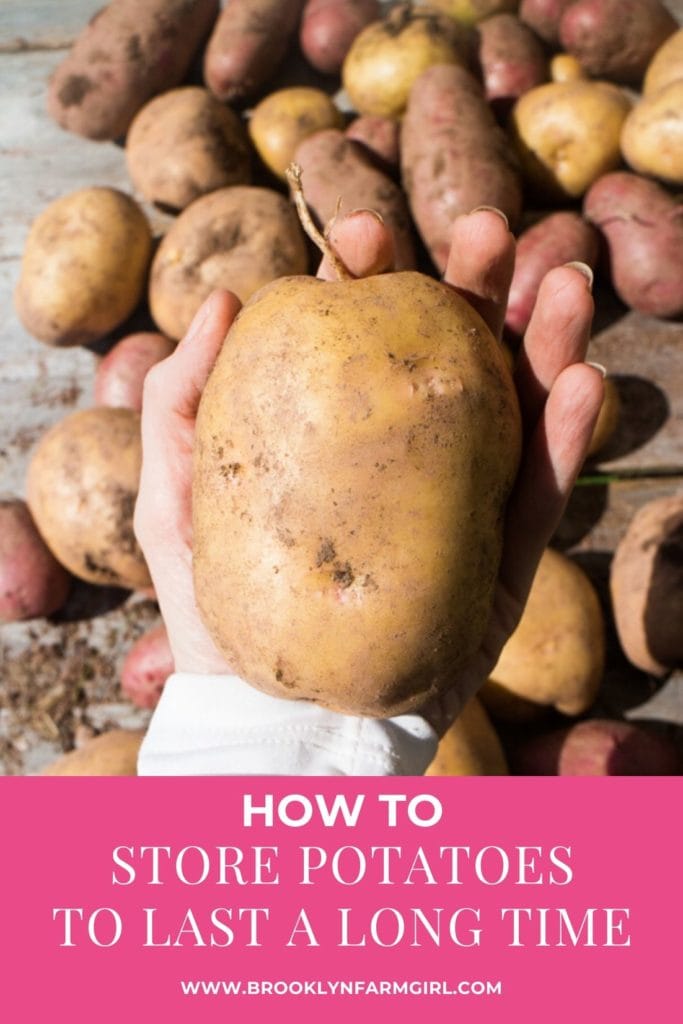
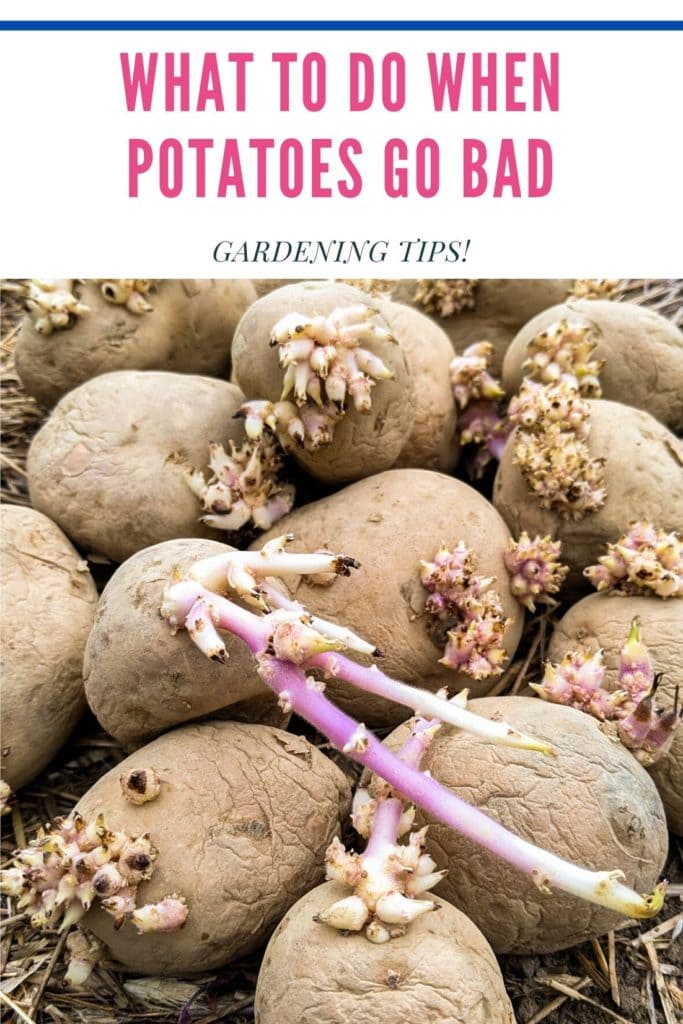
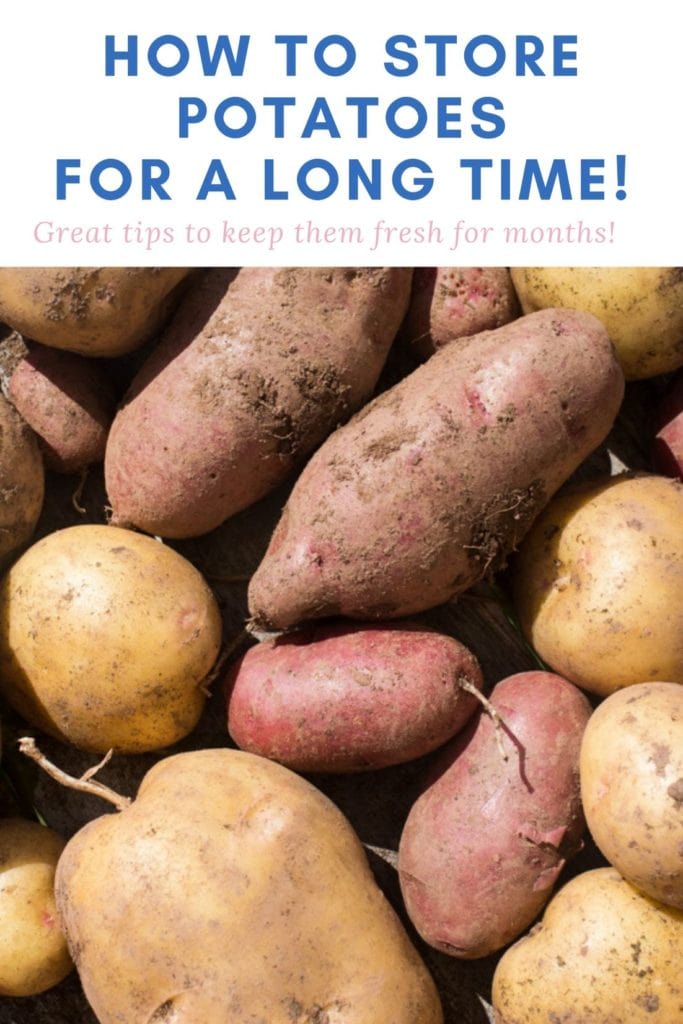
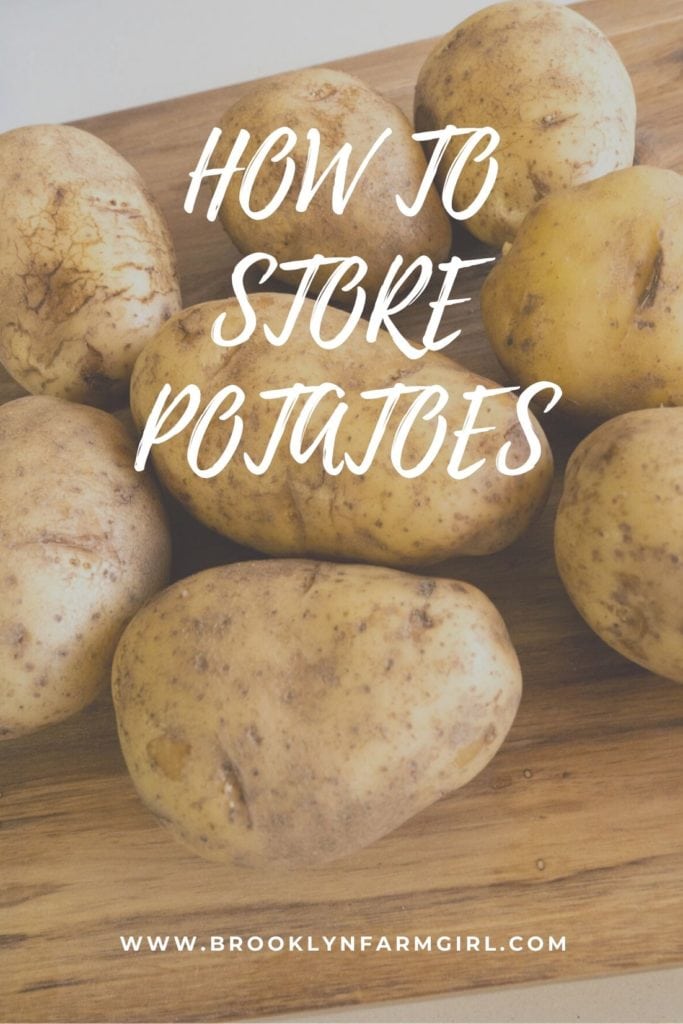
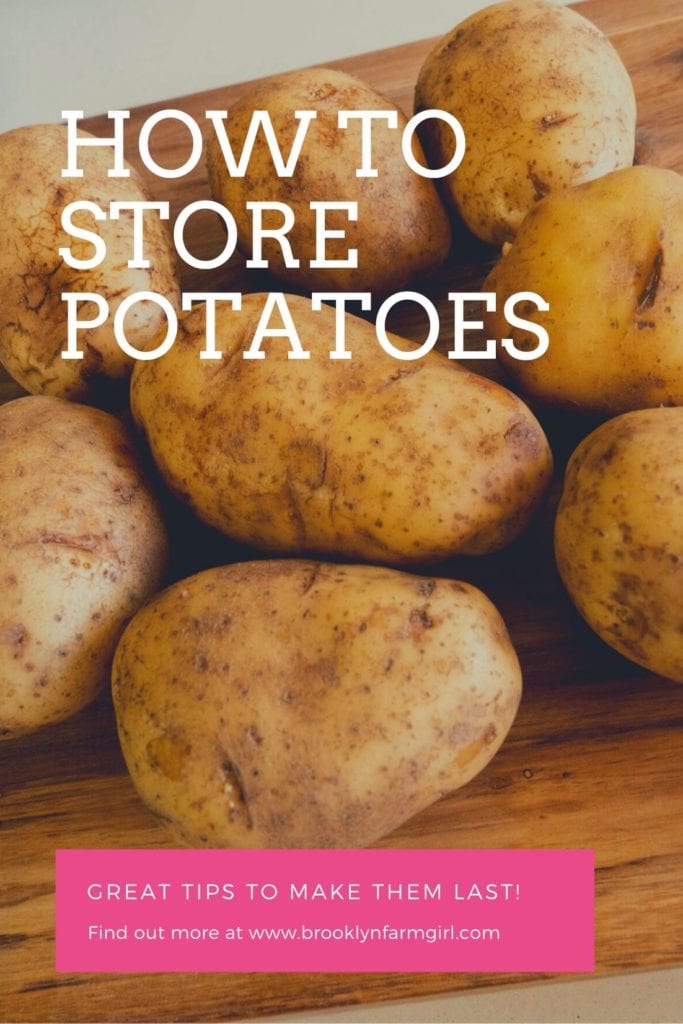
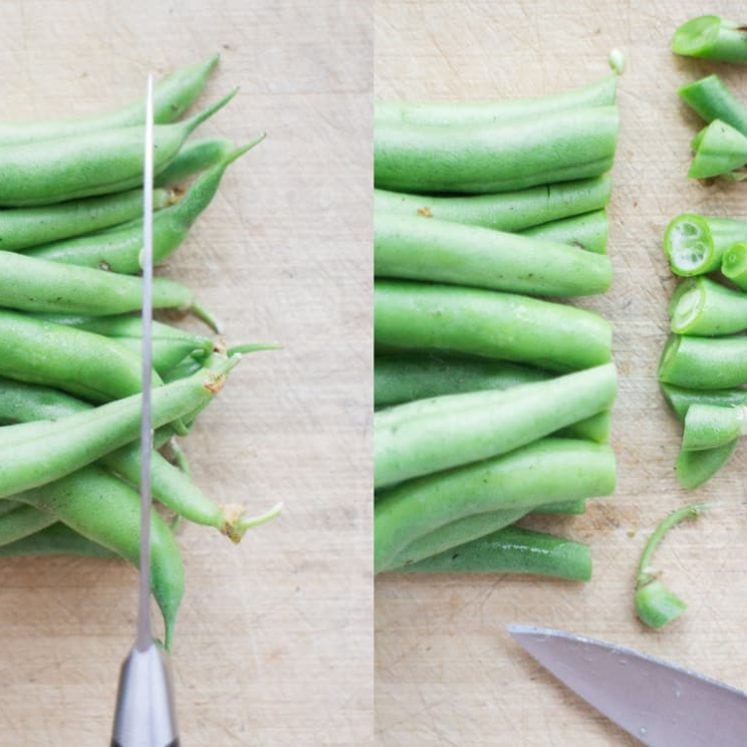
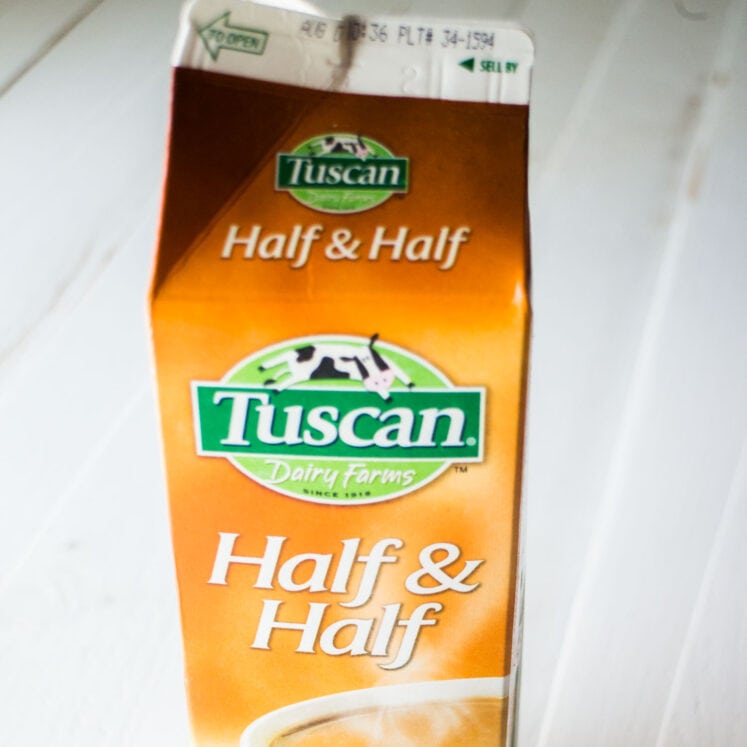
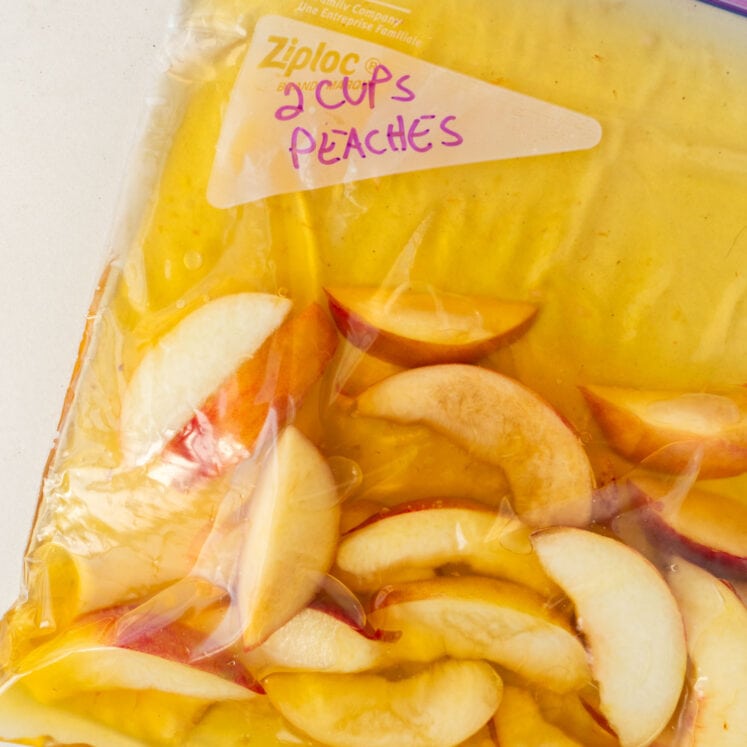
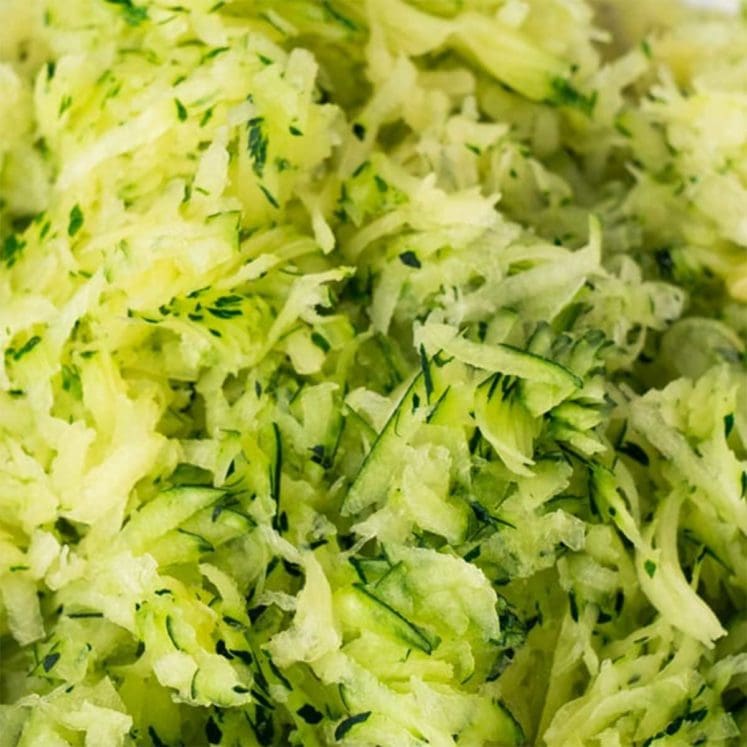
Kate Gowins says
Where to store potatoes if you don’t have a root cellar? The house is too warm. Refrigerator is a no-no.
Pamela says
Do you have a cool, dark cupboard or pantry? That would work well too!
George Styer says
Pot of gold? its like 10 pots of gold Wifey is away and I’m left with sorting out the veg garden and I’m no good at this but your site is a mine of info Thanks and Thanks again…now to those French beans !!!!
Donna M Smith says
Your site is like finding a pot of gold.
Pamela says
Thanks Donna! I hope the recipes and tips can help you! 🙂